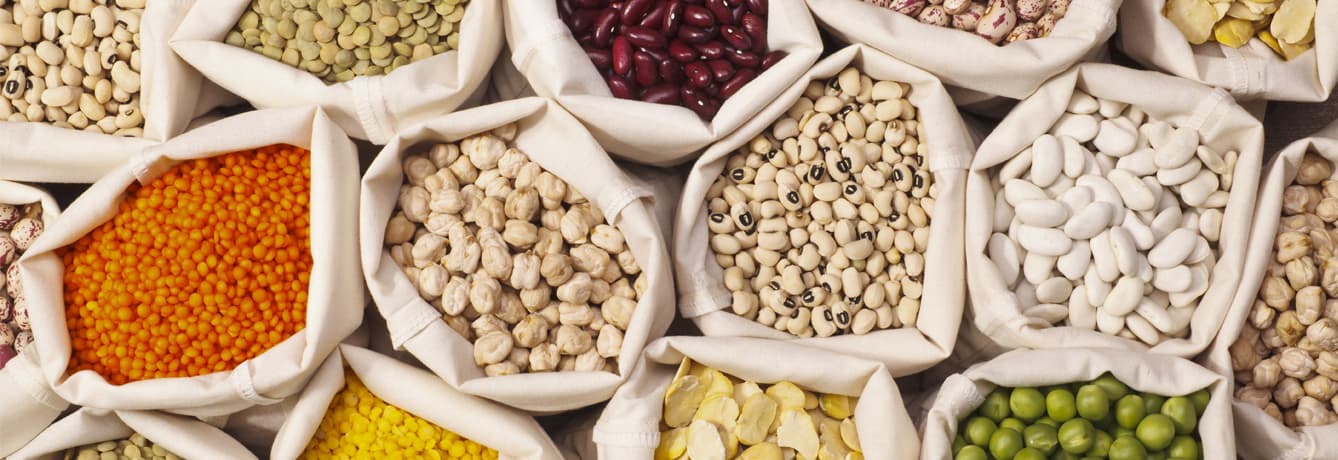Its good to be a bean counter – when you’re counting extra servings that add up to better health! When you look at the load of research backing up beans health benefits, its no wonder we ought to be eating more.
While beans are a well known source of heart-healthy fiber and high-quality protein, they’re less famous for their off-the-charts polyphenol capacity.Most varieties also provide half the folate you need, are an excellent source of phosphorus, a good source of potassium, plus a decent dose of iron and zinc.The “B” in beans also stands for B vitamins: Thiamin (B1), Riboflavin (B2), Niacin (B3), B5 and B6 which together help promote healthy skin, hair, muscles and brain function.
Below we list the nutrient highlights of some of the more commonly consumed bean varieties.
Red: Top polyphenol bean – packing an even bigger punch than blueberries when compared gram-per-gram.Reds are also the top bean source of iron (providing nearly 30% of women’s daily needs and 65% of men’s).Iron supports the formation of hemoglobin, a blood protein that transports oxygen.
Kidney: Second ranking polyphenol bean on the USDA’s list and nearly ties Navy beans as top fiber source.If you’re among the 50% of Americans who fail to get enough fiber then keep a few cans of kidney beans in the cupboard.
Black-eyed: In addition to providing the inspiration for one of the coolest hip-hop bands, these black-eyed beauties are the top bean for your bones! They have the most calcium of any bean, plus folate (which may help reduce the risk of fractures) and magnesium (which can reduce men’s gallstone risk by one third).
Black: In addition to also ranking among the bean superstars fiber and protein, black beans are the top bean source of magnesium – a mighty mineral lacking in the diets of 64% of men and 67% of women.Magnesium has been shown to help with several conditions including the risk of colon cancer, diabetes, high blood pressure and even PMS.
White (Navy, Great Northern): The Navy variety of the white bean is the top bean source of fiber.Just one cup provides half your fiber needs for the day.Also, the Great Northern variety is the top bean source of phosphorus, a mineral needed for healthy bones and teeth.That’s especially important for young women (ages 9-18), 40% of whom do not get adequate phosphorus.
Lima: Hypertension a concern? Then load up on limas, the top bean source of potassium, a mineral needed for blood pressure regulation.Given that 90% of men and nearly 100% of women don’t get enough potassium, limas should be on your list! Lima beans also contain the phytochemicals coumestrol and saponin, compounds that may impart anti-cancer benefits, according to basic research.
Pinto: Top bean source of selenium – a trace mineral linked to lower prostate cancer risk.Pintos are also ranked higher than the blueberry in polyphenol power.
While the legumes listed above are “best for you” among better known varieties, some more obscure beans deserve a place on your plate.One – called the cranberry or Roman bean – provides a third of your daily protein needs and nearly all your folate needs, helping to lower the risk of birth defects as well as promote heart health.
Just remember that regardless of which legume you like best, substituting vegetable protein in place of meat could dramatically cut your risk of death from heart disease, as found in a Mayo Clinic analysis.
Published February 1, 2006



